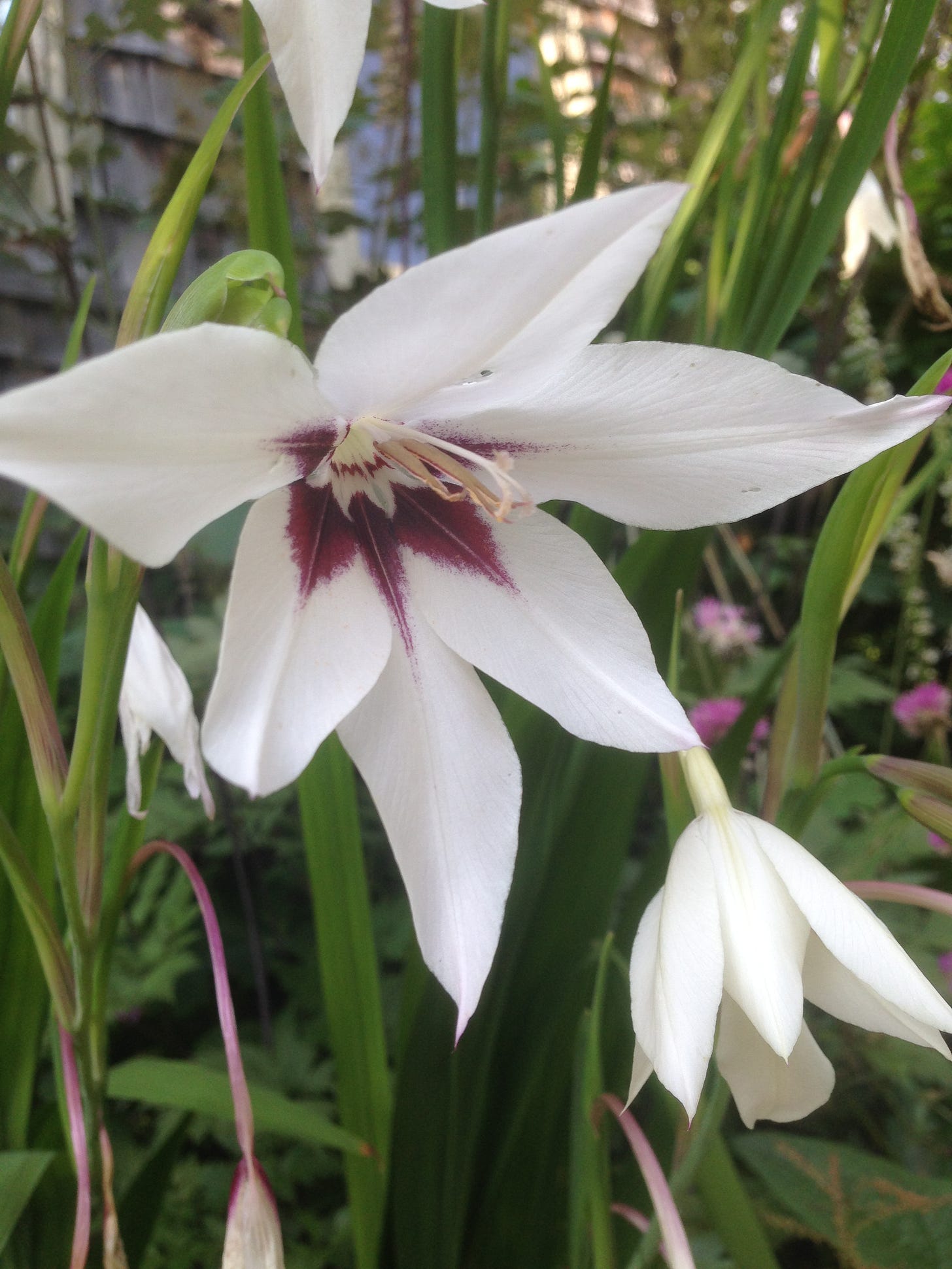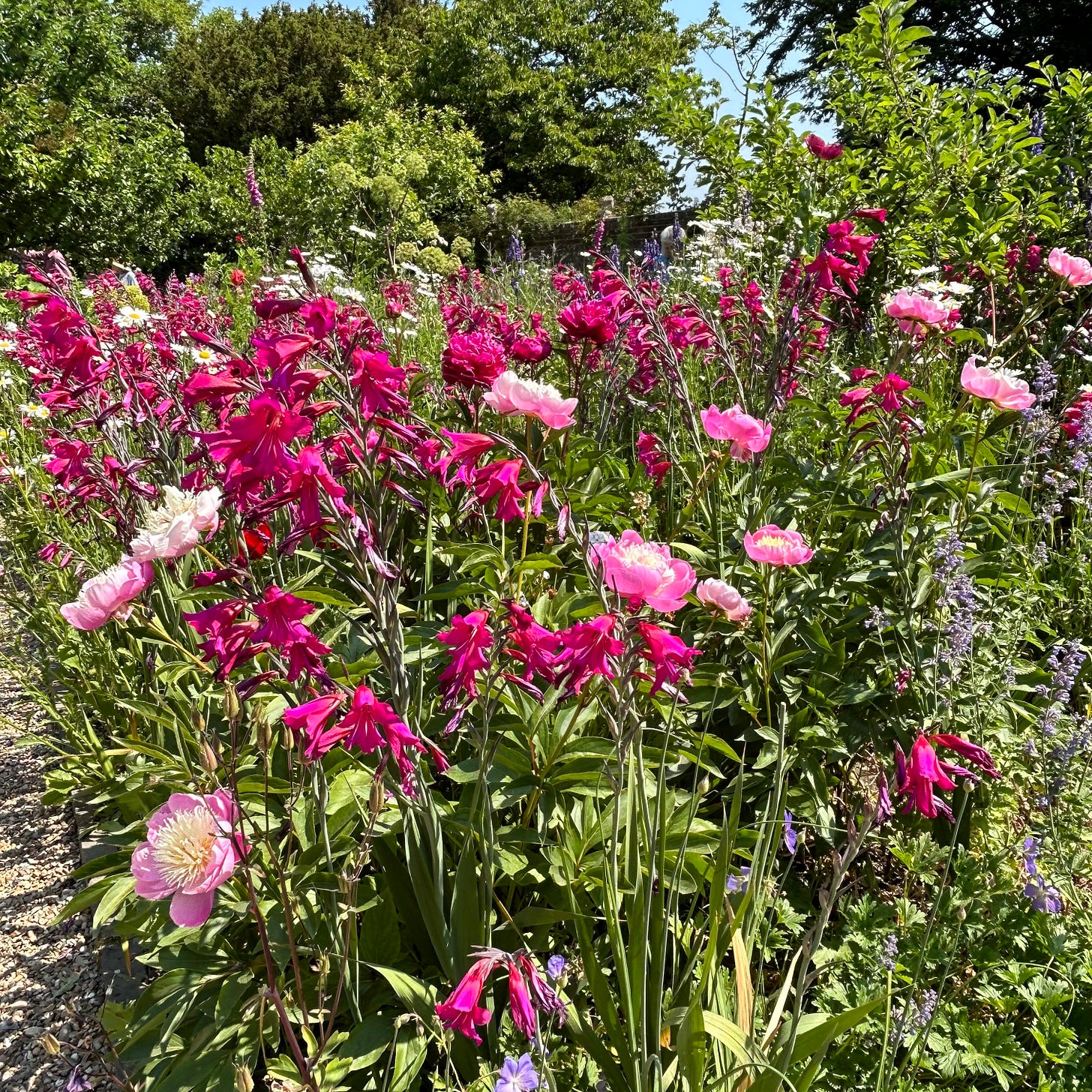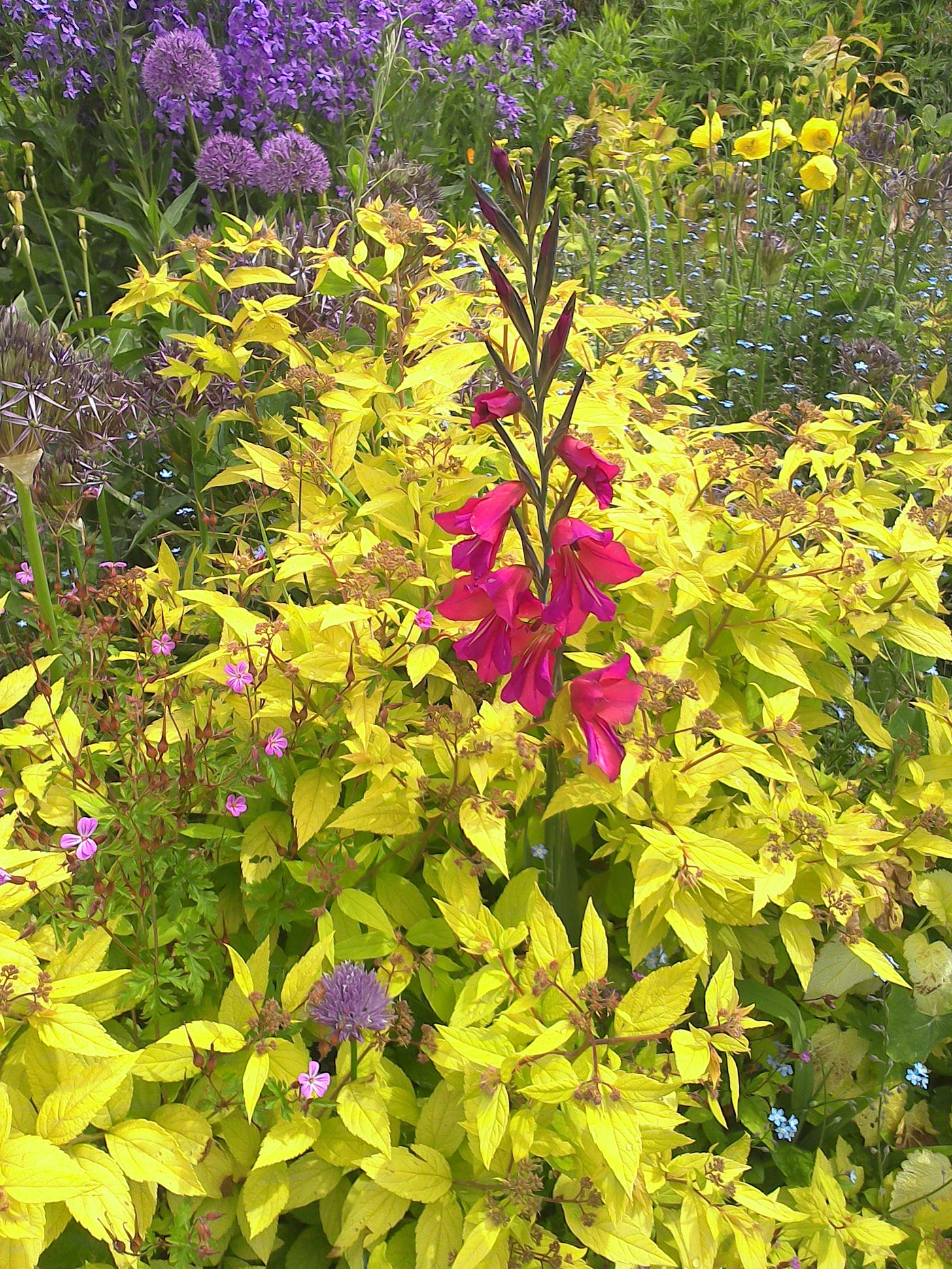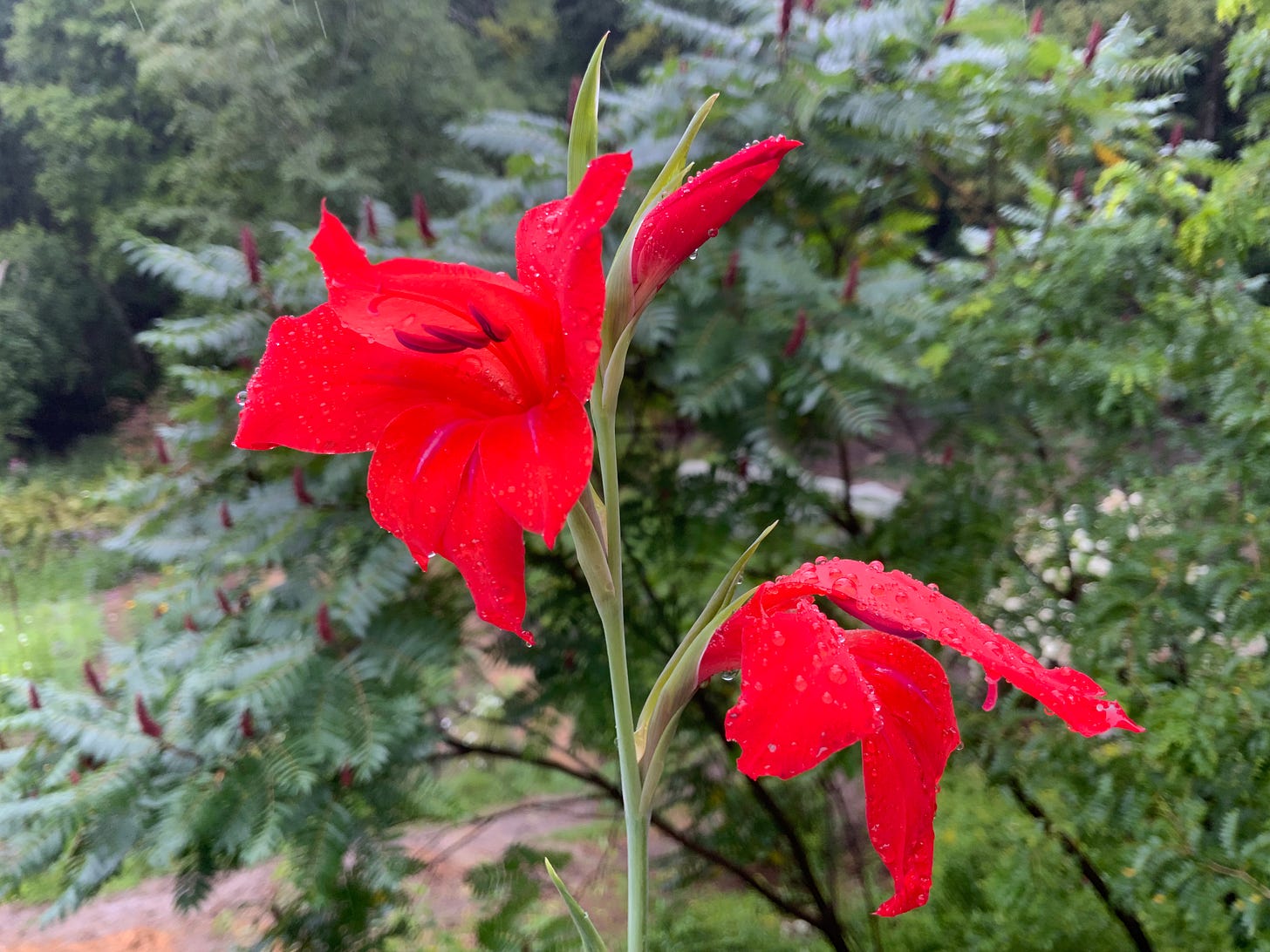Many years ago while walking down Fifth Avenue in New York City, when it was still a center of high end commerce, I saw in the showroom of Versace’s a massive glass cylinder full of dozens of bright red gladiolus set in a diagonal swirl. It was a spectacular display of a much maligned flower. Gladiolus x hortulanus, with big showy blooms, was developed in the nineteen century from wild species, of which there are hundreds, mainly growing in Southern Africa and the Mediterranean areas. Often grown as a cut flower and sometimes tucked into mixed borders, many love them. Yet there are gardeners who feel the opposite. Eleanor Perenyi wrote in her classic book, ‘Green Thoughts’, that gladiolus are “beyond the pale”. Christopher Lloyd, who relished garishness, called them “lumbering monsters.” Henry Mitchell complained that “if they don’t flop, then they lean, which is worse.” Elsa Bakalar summed it up by saying, “Gladiolus, it seems, are one man’s meat and another man’s poison” but added “the tall ones are hard to use gracefully…but there are miniatures that will provide small pools of color in the late border.”
There is one small gladiolus species that I grow every year after being introduced to it by Elsa. Back in the 1990s it was still referred to as Acidanthera, but it now classified as Gladiolus callianthus ‘Murielae’. It is so uncharacteristic of the big gladiolus that it is often called the peacock orchid, the sword lily, or the Abyssinian lily. The latter name alludes to its native lands in the East African mountains. I buy one hundred corms every year and stagger the plantings every few weeks to have flowering plants throughout the summer. The creamy white blooms have a sultry maroon star-like blotch in the center and, like many white flowers, they are night scented with a sweet perfume that lasts until morning.
There are other small gladiolus species that are appropriate in a mixed border. This year I grew G.primulus ‘Mirella’, a short variety with orangey-red blooms which I enjoyed. On my trip to see English gardens in June the Byzantine gladiolus, a magenta Mediterranean native, was blooming in a few gardens giving a colorful vertical zing. It has naturalized in fields in England and I remember, while climbing the cliffs in Hastings, I came upon a single escapee with a view of the English Channel.
Christopher Lloyd grew the miniature butterfly gladiolus, G.nanus, that comes in shades of pink or white or bi-colors. He wrote “among the most worthwhile are the nanus hybrids…the prettiest, in my opinion, is ‘Nymph’…palest pink with two carmine kissing spots, shared like a mouth on the lower segments.”
One gladiolus that I want to grow next season is G.flanaganii, known as the “suicide lily”. It’s native habitat is the cliffs of the Drakensberg Mountains in Natal, South Africa. The species is named after botanist George Flanagan and the sobriquet refers to the extreme difficulty of getting to know the wilding up close without falling off the edge. Sue Milliken and Kelly Dobson of Far Reaches Farm speak of it affectionately as “a smaller glad but very lovely with red flowers of somewhat angled stems as if it were still on the cliff reaching out into space.”
When I searched online for gladiolus/funeral the first choice was an article from Gardenista called “Gladiolus: Rethinking a Funeral Flower”. The next choices were from funeral services with offerings of sympathy collections, funeral packages, and sentimental sprays full of gladiolus which symbolize remembrance and admiration. It’s a bit sad that the first thing some think of in connection with a flower is funerals.
I don’t grow the big glads but I can appreciate their appeal and remember that display on Fifth Avenue with delight. The smaller varieties are more fitting in size and color for a perennial bed. I will try new species but will always grow the Abyssinian lily, Gladiolus callianthus ‘Muriellae’, for its striking beauty and its lingering sweetness that I will inhale as I enter the garden, on a summer morning, before the sun.










Most Beautiful gladiolus 🩷🤍🩷🤍🩷 ~ Wonderful Essay~ so excited to have been there and Christopher Lloyd’s garden with you💚
thrilled with meeting this beauty last year and hope for a visit each year - a spectacular surprise🤍